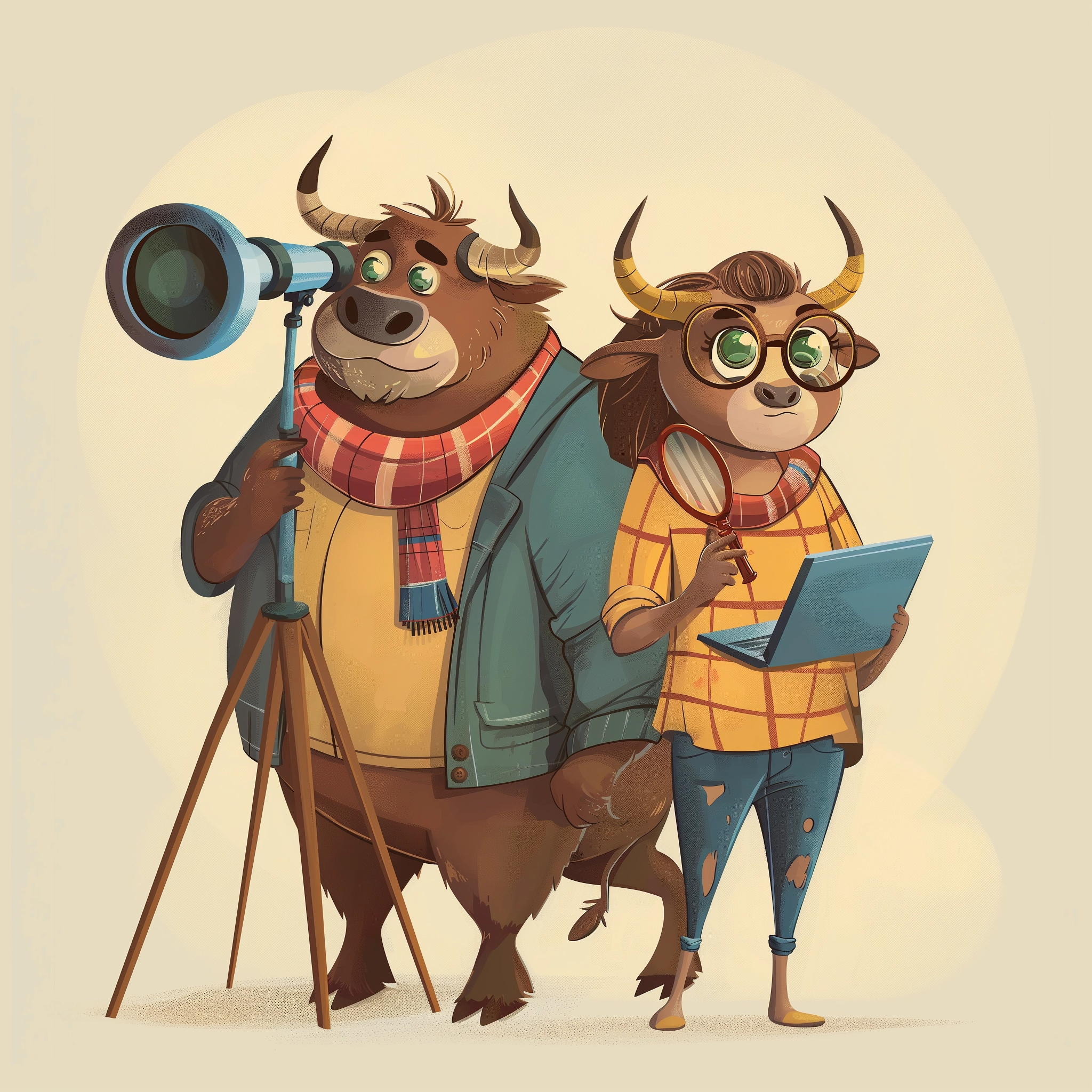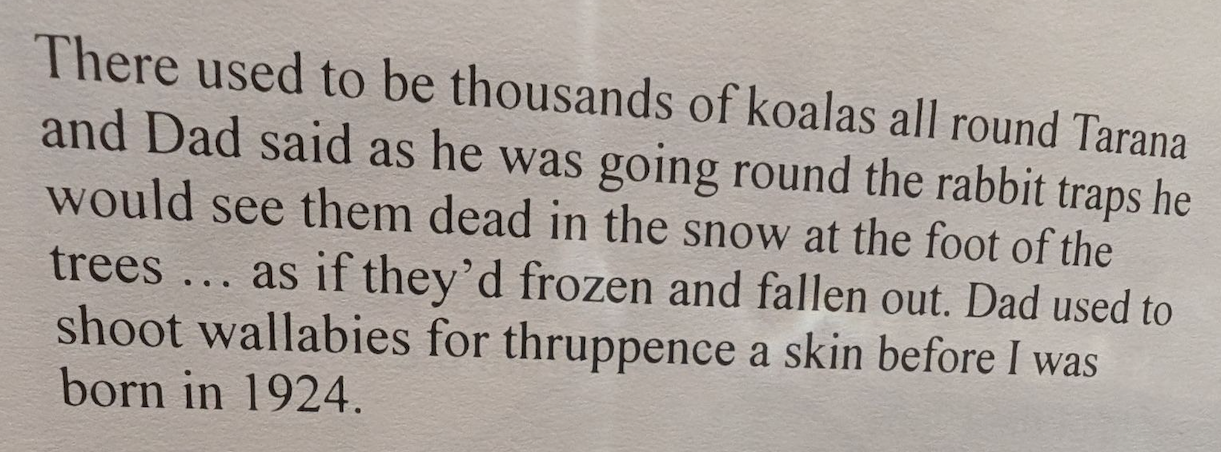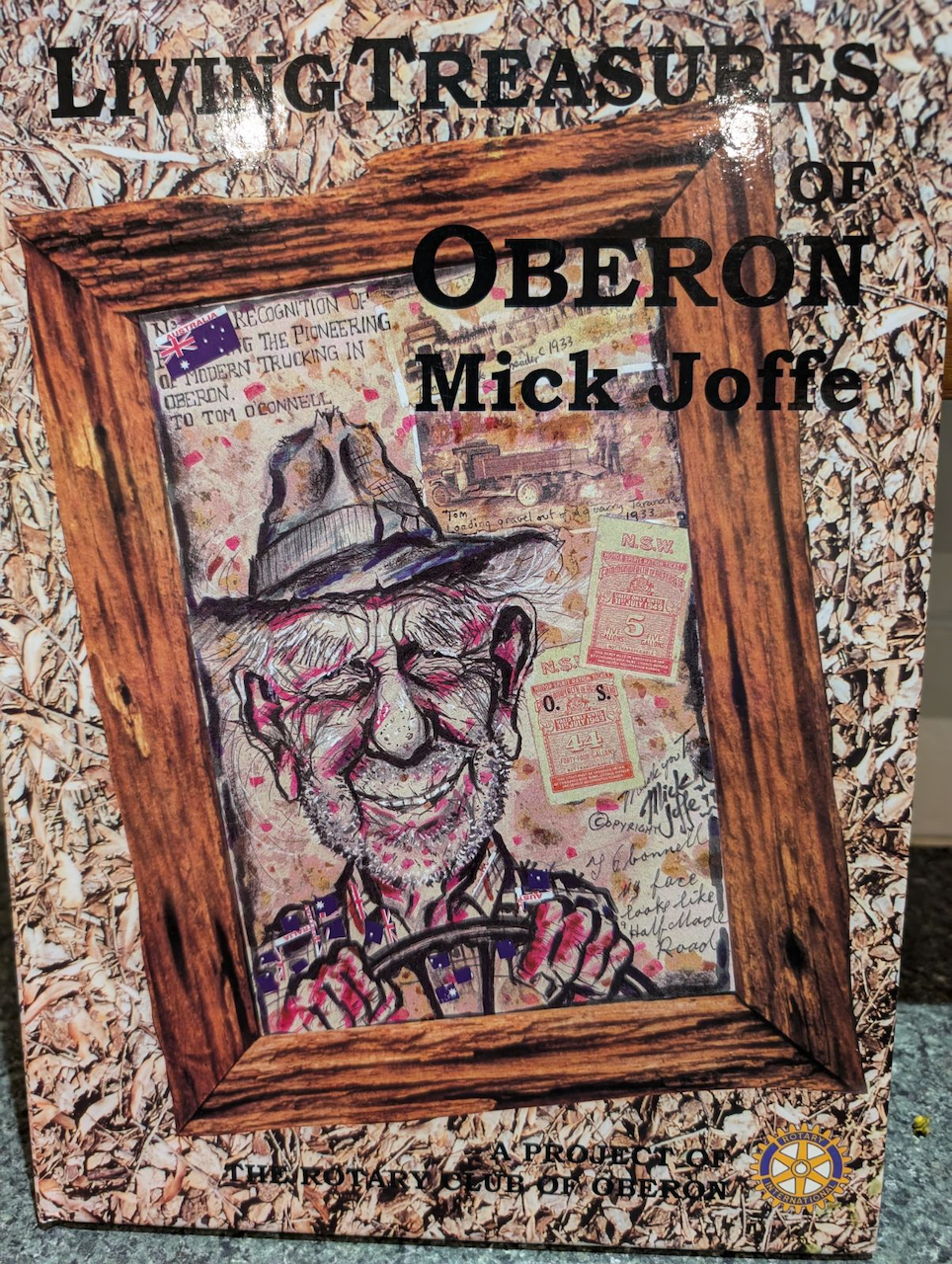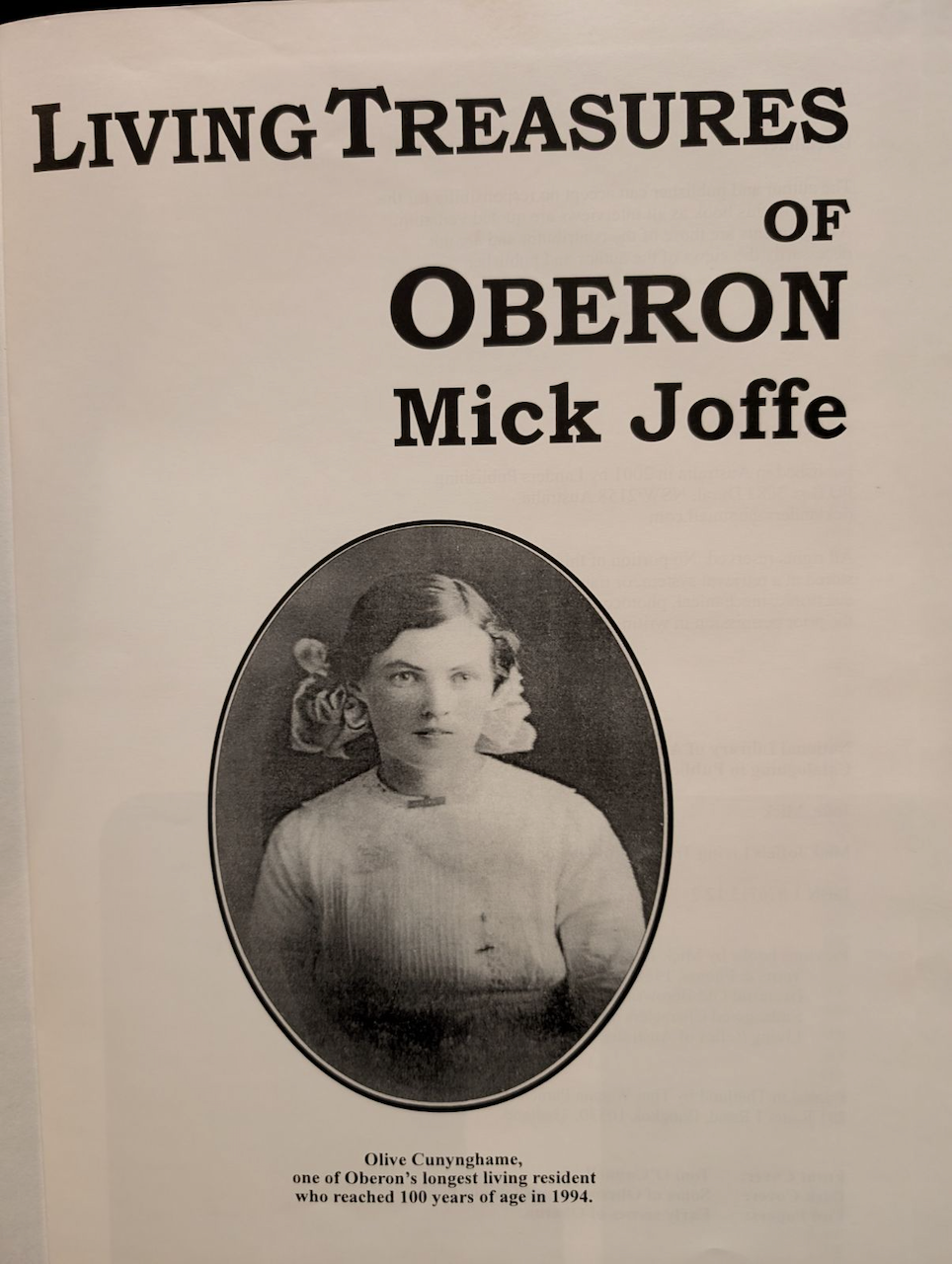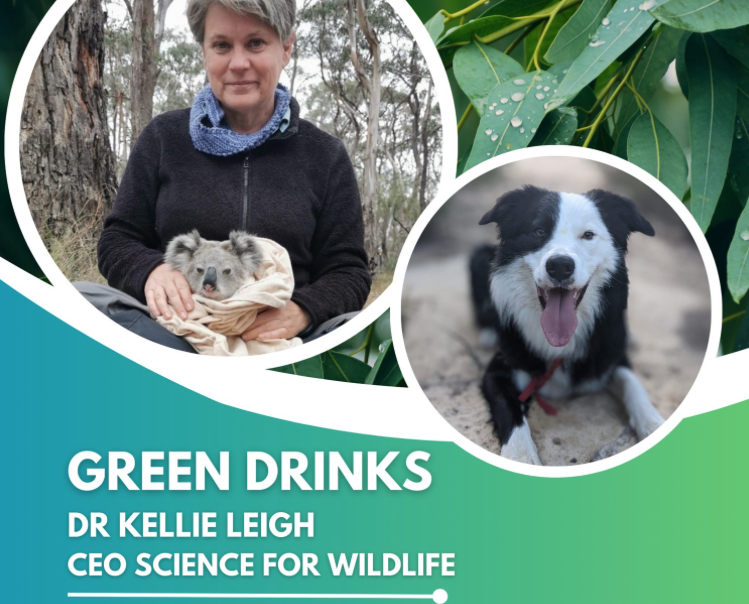| Koala records for Oberon LGA | |||||||
|---|---|---|---|---|---|---|---|
| in the Australian Living Atlas (ALA) database | |||||||
| Decade | |||||||
| 1960-1969 | 1970-1979 | 1980-1989 | 1990-1999 | 2000-2009 | 2010-2019 | 2020-2029 | |
| ALA species sightings and OzAtlas1 | - | - | - | - | - | 1 | - |
| iNaturalist Australia2 | - | - | - | - | - | 1 | 17 |
| NSW BioNet Atlas (via ALA)3 | 2 | 2 | 1 | 3 | 4 | 104 | 219 |
| 1 ALA species sightings and OzAtlas | |||||||
| 2 iNaturalist Australia | |||||||
| 3 NSW BioNet Atlas (via ALA) | |||||||
Surveying Koala populations in the Oberon region
OCSN members and members of the public are strongly encouraged to document koala sightings and record these in the in the I Spy Koala app for smartphones, which sends the data to the NSW government BioNet Atlas (see note below for more details), as well as the iNaturalist app. More systematic field surveys by OCSN may be organised in due course. In addition, the feasibility of using eco-acoustic methods is being investigated (see below).
Introduction
Koalas used to be plentiful throughout most of south-eastern Australia, but relentless habitat encroachment has now pushed them towards possible extinction in the wild in the foreseeable future, an almost unthinkable situation. Indeed, the entire koala population of Queensland, NSW and the ACT was officially listed as endangered under national environmental law in February 2022.
There are anecdotally reports of remnant koala populations in Oberon LGA, and not just in the National Parks areas. Indeed, there are a surprising number of documented koala sightings in the region, recorded in various biodiversity databases, as shown below, some of them recent. However, there appears to be little or no systematic effort to document remaining koala populations in Oberon LGA, and this is a gap which Oberon Citizen Science Network can help to close.
Historical evidence of how plentiful koalas once were around Tarana, which is about 15km north of Oberon township, is provided by this excerpt from an interview with Mick O’Connell on page 44 of the book Living Treasures of Oberon by Mick Joffe (cover and title page also shown below, click or tap on the images for a larger version). Many thanks to OCSN member Maree Arrow for providing this wonderful historical note.
Australian Living Atlas (ALA) records of koala observations in Oberon LGA
The Australian Living Atlas (ALA) is a fantastic resource, partially funded by the Australian Research Data Commons (ARDC). ALA collates biodiversity data from many sources into a single database, which in turn is made available as part of the Global Biodiversity Information Facility (GBIF).
In the table below, we can see the various sources and numbers of records for koala sightings in Oberon LGA over time for the various sources shown – most of the data comes from the NSW BioNet Atlas
The NSW BioNet Atlas is a database of flora and fauna information collected over many decades from multiple sources, operated by the NSW Department of Planning and Environment (DPE). The role of BioNet is described by the DPE thus:
BioNet aims to improve biodiversity outcomes by enabling the community and government to proactively manage and enhance biodiversity in New South Wales through comprehensive, credible and robust data and information.
It is also important because threatened and endangered species records in BioNet must be used by assessors of proposed developments in order to avoid or minimise impacts on wildlife, and is also used as part of the Biodiversity Assessment Method (BAM), which is used as part of the legislated Biodiversity Offsets Scheme (currently under review due to numerous flaws found by the Audit Office of NSW).
Duplicate records in the ALA database have been filtered out of the data presented in the tables and maps below – only the record marked as REPRESENTATIVE, where records appear to be duplicated, is included. Similarly only those records flagged as spatiallyValid==TRUE are included. See also the warning below regarding spatial precision, which is different from spatial validity.
Interactive map
In the map below, you can toggle layers on and off for koala observation records in each decade. Zoom in to see individual sighting records where they overlap. If you click on each koala icon on the map, additional details about the record in the ALA and BioNet databases will pop up. Some records have images associated with them documenting the observation.
The NSW BioNet data shown in the map below were manually downloaded from the NSW government BioNet database on 24 September 2024. All the data is made freely available to the public by the NSW government. It is intended to convert these charts and maps to automatically update once a week with the latest data from BioNet once an API access key has been obtained.
It is hoped that maps such as these can help inform ad hoc efforts to find and observe the remaining koalas in Oberon LGA, as well as planned systematic field surveys and the deployment of novel survey methods using eco-acoustics (see below) by OCSN members.
Please note that the geographic position of the icons in the map below may not be precise. Some records provide precise position information, in which case the locations are accurately shown, but many provide imprecise information so as to protect the exact locations from unwanted attention or interference. If you click on an icon, the pop-up information will show the positional accuracy information (in metres) where it is available for that record. Often it is very approximate eg within 10 km! Unfortunately not all data sources which contribute to the ALA database seem to report positional accuracy. Anyway, please be aware of this important limitation of the data, which in many cases is an intentional limitation to protect vulnerable and endangered species or populations.
Koala observations in Oberon LGA recorded in the NSW BioNet Atlas and the Australian Living Atlas (ALA) databases
Surveying koala populations in Oberon LGA
The NSW Government Environment and Heritage web site has some useful information on koala surveys, including the I Spy Koala app for smartphones.
The I Spy Koala app was developed in 2019 by the NSW Department of Climate Change, Energy, the Environment and Water for the collection of koala observation and survey data.
The app was part of a pilot designed to improve the flow of koala observation data to NSW planning and decisions tools. All data submitted via the app is made available by the department through the BioNet Atlas, New South Wales’s corporate biodiversity data repository. From there, data is accessible to researchers, land managers, planners, consultants, government and the public via BioNet webpages and associated data services. Once your I Spy Koala data is submitted it will be available in BioNet within approximately 2 weeks.
The app has facilities for systematic censuses of koalas in specific areas – OCSN may make use of this.
The following notes have been provided by OCSN committee member Richard Harrowell who attended a talk By Dr Kellie Leigh organised by Greening Bathurst on 24th October 2024.
I have just come back from a talk by Dr Kellie Leigh, CEO of Science for Wildlife, based in Mount Victoria, accompanied by her dog Groot. Not too long ago, scientists didn’t think that koalas lived permanently in the Blue Mountains areas, and any koalas they saw were just passing through. This is because of the sandy soil, and the lack of the right kind of eucalypt trees. Since Kellie started her work, they have discovered that koalas are thriving in the area, and they eat the leaves of a far greater variety of eucalypt trees than scientists previously thought. Compared to other koala populations in NSW, the Blue Mountain koalas have the best genetic diversity, the least occurrence of chlamydia, and appear to be increasing in numbers. Science for Wildlife is very interested in sightings of koalas in the Greater Blue Mountains World Heritage area, all the way west to Oberon and Mudgee, as well as in the Hawkesbury and Western Sydney areas – particularly sightings on private land. They request that any such sightings be reported on their web site (as well as in other reporting apps such as I Spy Koala described above).
The koala communities go from the Kanangra area up to the Wollemi area. They are currently extending their search up towards Mudgee following some sightings.
The World Heritage area around Blue Mountains extending west to Oberon is over a million hectares, and it is impossible for a small group of scientists to do any kind of comprehensive audit or survey of koala populations in the area. Koala’s in trees in the bush are really hard to see. Kellie relies almost exclusively on Citizen Scientists to make the initial observations to locate a colony. They have so far identified five separate colonies and four of them have been found to have no chlamydia at all. They can tell this by analysing the droppings. Apart from habitat loss, the biggest threat to koalas is dogs that are out at night when the koalas are moving between trees. During the big bushfires of 2019/2020, Kellie’s organisation Science For Wildlife actively removed a large number of the identified colony koalas before the fire passed through in order to save them, re-introducing them after the fire had passed and regrowth had started. They determined that there are no safe areas for koalas during a high-intensity fire.
Koalas manage to digest the toxic eucalypt leaves with the help of their gut bacteria, passed to them from their mother. If you move a koala to a different habitat with different trees, it can be really hard for them to adapt as they may not have the right gut bacteria for the new trees.
Science for Wildlife is very interested in finding trees that seem to be important to the Greater Blue Mountains World Heritage Area koalas. The way you work it out is by looking for a lot of koala droppings around the tree. These trees may not be the kind of tree you expect a koala to like. These droppings can be olive green or brown if they are older and have a not unpleasant musky eucalyptus smell. If you break them open, the droppings are olive green inside. By contrast, possum droppings just stink.
The droppings are not always easy to see which is why Kellie has trained her dog, Grout, to find the droppings.
Novel eco-acoustic survey methods
Recently ecologists have begun to use eco-acoustic methods for koala surveys. More information about these methods can be found on the OCSN eco-acoustics page. Koalas can be quite vocal animals, particularly male koalas during mating season wen they emit distinctive, low-pitched roars. These roars can be captured using weatherproof, battery powered digital recorders such as the AudioMoth device. OCSN has several such devices at its disposal for deployment around Oberon LGA.
One problem with this approach is that many hours of audio recordings then need to be listened to in order to locate any koala roars or other vocalisations, if, in fact, they are present. This is a tedious and potentiall error-prone process – it is easy to miss a roar if attention wanes.
Several groups of researchers are working on or have developed automated methods for detecting koala roars in digital audio files, such as this project at Western Sydney University. Unfortunately none of these projects have made the resulting software or computer code available for use by other researchers. OCSN members are continuing to investigate the availability of computerised methods for screening audio recordings made in potential koala habitats.
In the meantime, digital audio recordings made using AudioMoth devices deployed by OCSN in the Oberon LGA will need to be screened by humans listening to the recordings. Fortunately the recordings can easily be divided up and distributed to several individuals to make the task a bit less tedious. Audio screening can also be done via earphones while engaged in other tasks!
It may be possible for Oberon Citizen Science Network to use the DigiVol crowd-sourcing platform operated by the Australian Museum to distrubute the task of listening to audio recordings to volunteers. DigiVol is an online platform which hosts “expeditions”, which are projects for which volunteers can register to under small tasks, such as watching a segment of video recorded by a wildlife or trail camera and noting if any target species appears in the footage. Each participant can undertake as few or as many of these small, discrete tasks as they wish, and as time permits, over the course of the project (expedition). OCSN will contact DigiVol to enquiry about whether they can host audio file screening tasks for us. As well, OCSN members are encouraged to sign up as a DigiVol participant, join an expedition and undertake some tasks!
